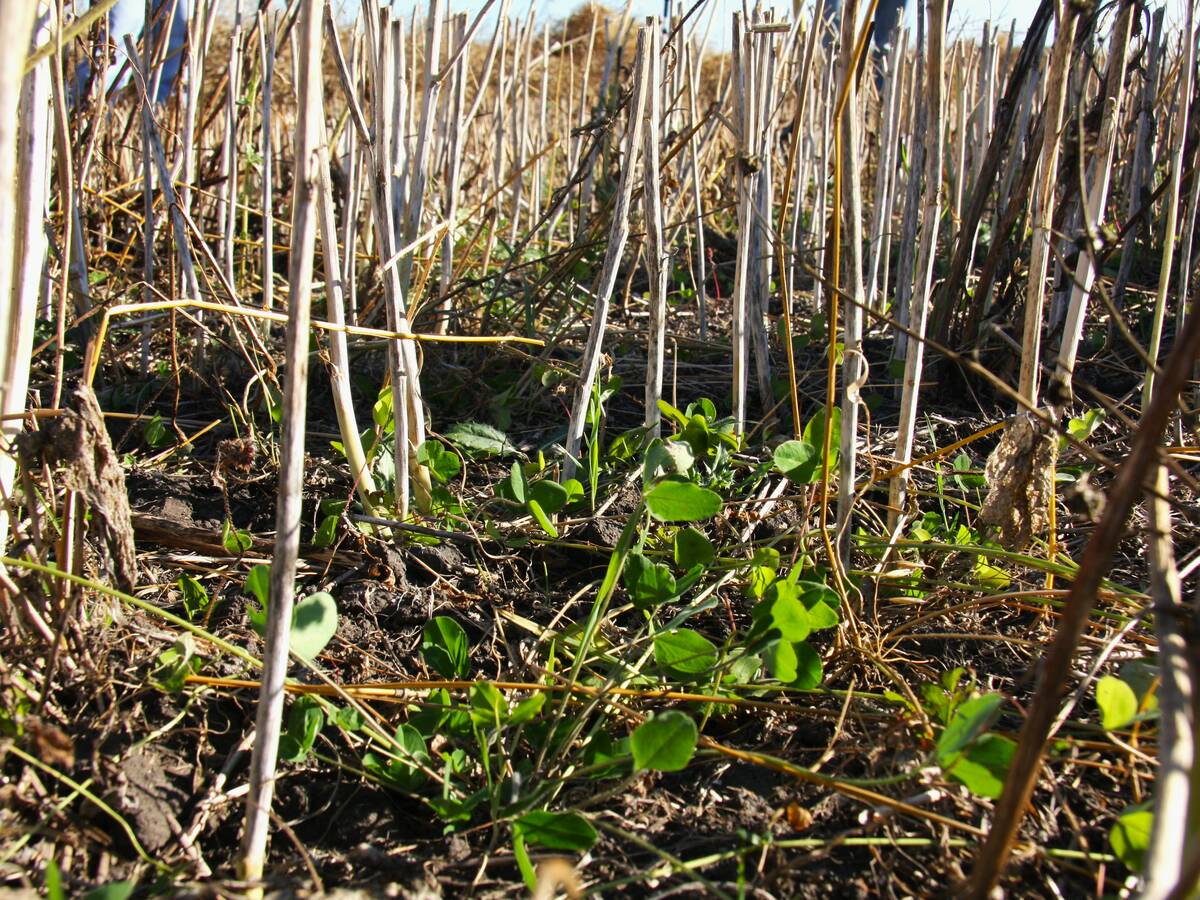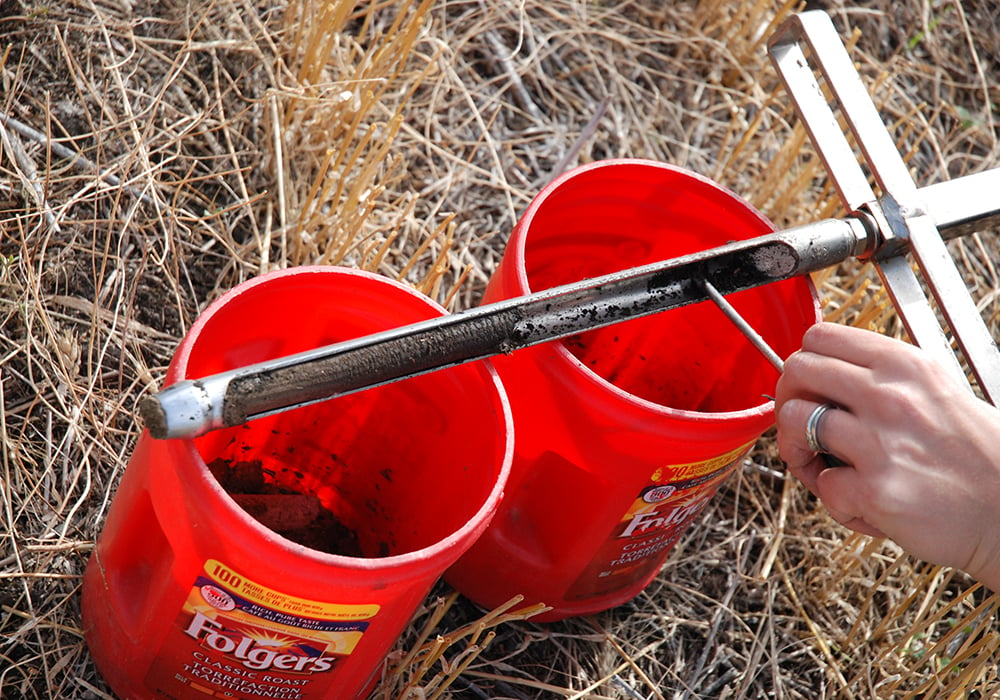Records indicate the first analytical soil sample was taken in 1914 in Ontario and the practice came to the Prairies in the 1950s and 1960s.
Based on current soil sampling frequency data and anecdotal evidence, all farmers are not convinced it is a practice worth the annual expense.
A few weeks ago, I conducted a rudimentary #Cdnag Twitter poll where 1,100 respondents selected whether they soil sample annually on all acres, every three to five years on all acres, annually on some acres or not at all.
Read Also

Saskatchewan project sees intercrop, cover crop benefit
An Indigenous-led Living Lab has been researching regenerative techniques is encouraging producers to consider incorporating intercrops and cover crops with their rotations.
Thirty five percent of respondents indicated they soil sample annually on all acres and 32 percent indicated they soil sample annually on a few acres. Just 10 percent of growers indicated they do not soil sample at all.
Perhaps the biggest barrier to more frequent testing lies in the challenge of convincing growers that soil sampling is not an expense but an investment.
At about $150 per composite sample, the act itself does not guarantee return on investment. However, a strategy built around these factors — consistency, curiosity and conscious analysis may help farmers get the best bang for their buck.
Pick a laboratory and stick with it. The two most common labs used on the Prairies are A and L in Ontario and Agvise in North Dakota. ALS labs in Saskatoon does nutrient analysis but no fertility recommendations.
It is important to note the nutrient extraction process can vary between labs and so can recommended fertilizer application rates. The recommendations are not a direct linear calculus; they are based on response curves from yield data generated across specific soil zones, so consistency is doubly important here.
Certain retailers use specific labs for soil sampling. For example, Cargill generally sends samples to Agvise and Richardson sends samples to A and L labs. Pay attention to which lab your results are coming from as retailers may switch and not mention it.
GPS benchmarking of soil sampling locations is the most effective way to sample consistent locations in a field. If you are new to soil sampling, one strategy might be to take a drive through the field with the person sampling your fields to give them a lay of the land. Consistent benchmarking from a baseline sample will help growers maximize data extracted from soil samples.
While on some level it’s safe to say the more samples the better, sampling specific areas of the field, such as high yielding areas, will result in a more targeted approach to nutrient application.
Les Henry suggests up to 30 cores per field should be taken, with a minimum of 16. Saline or low yielding areas should be left out.
Keep sampling depth and timing consistent. Sampling in the fall as close to fall freeze, after the soil is consistently below 10 C, will capture the most accurate situation for next year’s crop unless conditions are dry. Generally, in the fall the soil will be freezing up and microbial activity slows.
Another option is to soil sample right after harvest completion. This allows for better evaluation of last year’s nutrient levels and the opportunity to spread fall fertilizer.
Keep the lab, sampling locations, depth and timing as consistent as possible.
A zest for curiosity compounded with a healthy level of skepticism is one of the primary drivers behind change. A grower may wonder, what have my potassium levels been up to in the past five years? How much nitrogen am I losing from pre-seeding application? Or what is the correlation between soil organic matter and yield in my fields?
It is even possible that a farmer might find themselves in a situation where they can strategically cut back on fertilizer when prices are high, as the nutrient bank allows for less application. The inverse of this, of course, is that a producer can build immobile nutrients such as phosphorus when fertilizer prices are low. Above all, what gets measured gets managed and curiosity is often the engine behind this process.
It can be challenging to determine whether a problem exists. One farmer in the Twitter poll indicated he did not see the need to soil sample given the fact that he has had record yields the past few growing seasons. The challenge here, is narrowing down all the variables that are attributed to yield. Crop genetics, minimum-till practices and increased rainfall are a few of the significant drivers behind yield.
Do you soil test on your farm? #cdnag . Curious to hear your comments. May (or may not) write about it if there’s something interesting..
— Katelyn Duncan (@FrmerAtHerTable) January 5, 2021
An important step in soil sampling is to analyze and record the data. Remember, what gets measured gets managed. Multiple companies have online apps for monitoring levels and keeping farm data easily accessible.
Soil health analysis can help farmers understand yield potential. A grower may be more than satisfied with a 50 bushel per acre canola crop, but perhaps a few extra pounds of phosphorus could get them to 55 bu. per acre without increasing losses and increasing profitability.
There is a correlation between soil sampling and economic return. Fertilizer Canada conducted a fertilizer use survey of 1,000 Canadian farmers during the past three years. The survey shows a strong correlation between soil sampling and higher average yields, suggesting that the most profitable Canadian farmers may be those that soil sample.
For soil sampling to be a profitable practice, it must be used to its full potential. Not only will it take the guess work out of annual fertility planning, but it also serves as a mechanism to protect fertilizer investment and long-term soil health.
Yields and rates are increasing and so is removal, all important to precision ag.
Always be curious, always be skeptical, always be willing to change your mind in the face of emerging evidence.
Katelyn Duncan PAg is a Regina area agrologist, farm consutant and policy analyst. She can be reached at koducan90@gmail.com.















